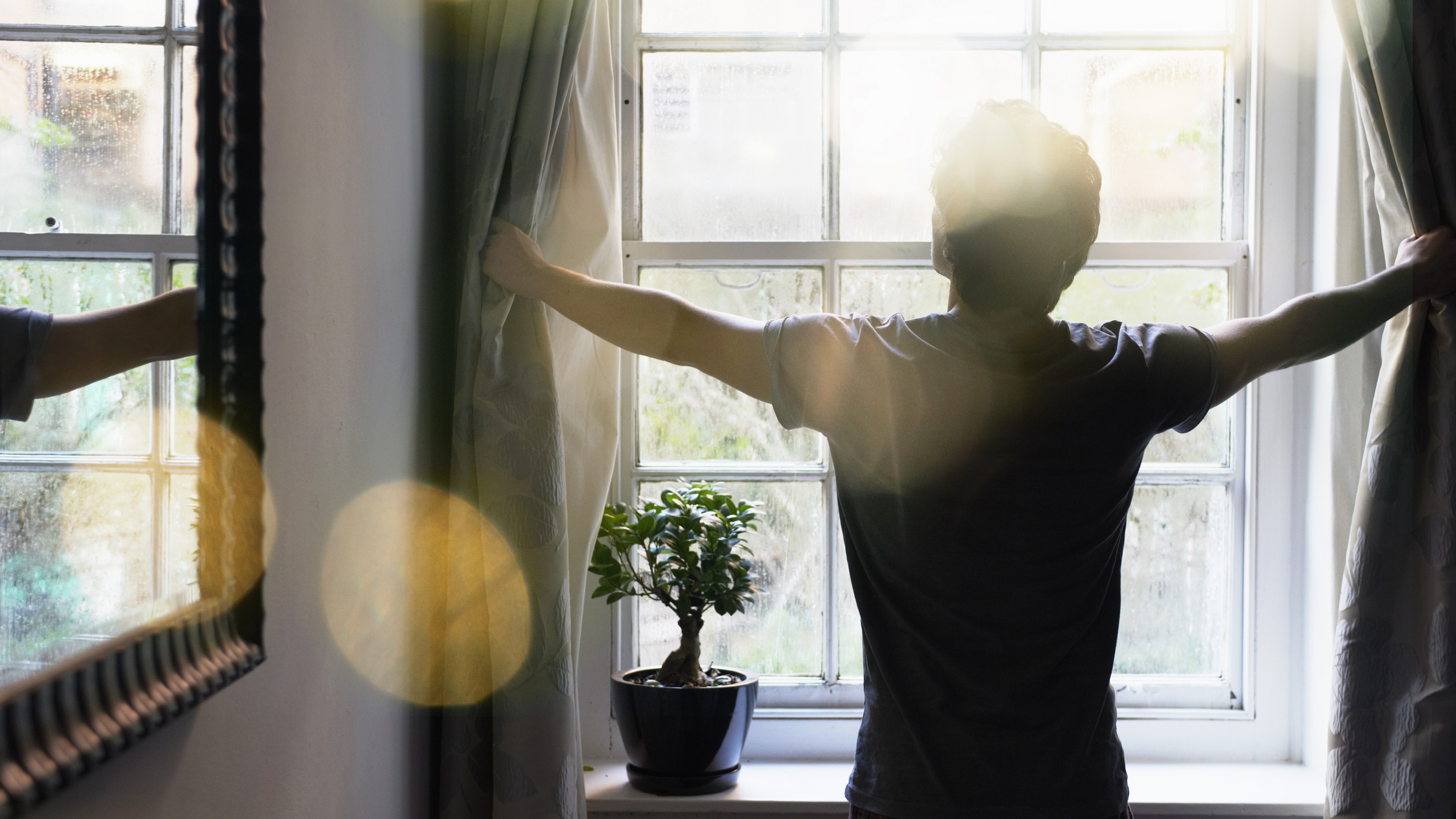Opportunity Zones Expert Sees Bright Future in 'Big, Beautiful Bill'
New legislation introduces rural "super incentives" and expanded access, though a potential investment freeze could stall billions in community development funding. Here's what every investor needs to know.


There is good news for community development enthusiasts and opportunity zone investors. OZ legislation is making its way through Congress with promising momentum.
On May 12, the House Ways and Means Committee unveiled its massive 389-page reconciliation bill, dubbed The One, Big, Beautiful Bill. Within this legislative behemoth lies Section 111102, titled "Renewal and Enhancement of Opportunity Zones," marking the first concrete step toward extending this impactful program beyond its current 2026 expiration date.
The Kiplinger Building Wealth program handpicks financial advisers and business owners from around the world to share retirement, estate planning and tax strategies to preserve and grow your wealth. These experts, who never pay for inclusion on the site, include professional wealth managers, fiduciary financial planners, CPAs and lawyers. Most of them have certifications including CFP®, ChFC®, IAR, AIF®, CDFA® and more, and their stellar records can be checked through the SEC or FINRA.
From just $107.88 $24.99 for Kiplinger Personal Finance
Become a smarter, better informed investor. Subscribe from just $107.88 $24.99, plus get up to 4 Special Issues

Sign up for Kiplinger’s Free Newsletters
Profit and prosper with the best of expert advice on investing, taxes, retirement, personal finance and more - straight to your e-mail.
Profit and prosper with the best of expert advice - straight to your e-mail.
The silver lining: Congress still believes in OZs
This draft legislation sends a clear message: Lawmakers recognize the value opportunity zones bring to communities nationwide. The program's appearance in this flagship reconciliation vehicle validates the positive data Congress has been seeing — job creation, wage growth and rising home values in designated areas.
Clearly, there's genuine reason for optimism, especially with the bipartisan support anticipated in the Senate.
What's in the package? Six key OZ provisions
Let's break down what this draft legislation would do:
More targeted focus on truly low-income areas. The qualifying income threshold would tighten from 80% to 70% of area/state median family income, ensuring investments flow to communities that need them most. Any tract with income exceeding 125% of the statewide or metro-wide median would no longer qualify.
Fresh start with rural America in mind. Governors get to nominate new zones starting January 1, 2027, running through 2033. At least one-third of these designations (or the state's rural population share, if greater) must be in rural areas, creating new opportunities for overlooked communities; importantly, as it stands now, the legislation disallows contiguous designated tracts if at least one of the tracts is not low-income.
Earlier reset of the current map. The 2018 designations would now expire on December 31, 2026, two years earlier than originally planned.
New timeline for tax benefits. Gains invested under the original rules are recognized as scheduled on December 31, 2026; however, gains invested between 2027 and 2034 can be deferred until December 31, 2033, creating a fresh runway for this powerful economic development tool.
Simplified basis step-up structure/rural investment super incentive. Rather than the current two-tier approach, investors would receive a clean 10% step-up in basis after holding for five years.
Moreover, investments in qualified rural opportunity funds (QROFs) would enjoy a supercharged 30% basis increase after five years — triple the urban rate. Plus, rural building renovations would only need to improve properties by 50% of original basis instead of 100%.
Opening the door to ordinary income. Individuals could defer up to $10,000 of ordinary income per year (with a lifetime cap), broadening participation beyond just those with capital gains.
Room for improvement: Constructive feedback
While the draft demonstrates a genuine commitment to opportunity zones, there are several areas where the Senate could strengthen the legislation.
The potential 2025-26 "capital freeze." The current timeline creates an awkward gap between programs. Investors harvesting gains in late 2025 or 2026 face a difficult choice: invest in zones that might disappear after 2026 or wait until the new map and better incentives arrive in 2027. This could unintentionally stall capital deployment precisely when we need it most.
Balancing urban and rural success. While bringing more investment to rural America is admirable, the rigid quotas might force successful urban revitalization stories to end prematurely. Cities like Birmingham, Ala., and Erie, Pa., have shown remarkable progress, but still have significant untapped potential.
Benefits that could be stronger. The single 10% basis bump, while helpful, represents a one-third reduction from the original maximum 15% benefit. And while allowing ordinary income participation is conceptually inclusive, the $10,000 cap falls below the minimum investment threshold for most qualified opportunity funds. (Permitting the creation of “funds of funds” could have meaningfully addressed this issue, but the bill does not include it.)
What's next in the legislative journey
The bill has passed the House, and the Senate is expected to take the measure directly to the floor in mid-June, where OZ champions may propose amendments to address various shortcomings within the existing bill.
Looking for expert tips to grow and preserve your wealth? Sign up for Building Wealth, our free, twice-weekly newsletter.
Here's how the Senate could address these concerns:
- Make OZs permanent with rolling deferrals to eliminate future "cliff" years and stabilize fundraising. This is most likely No. 1 on the wish list of everyone in the OZ community.
- Bridge the 2025-26 gap by either moving up the start date, creating an overlap period or grandfathering in projects already underway … or all three!
- Allow interim gains to be reinvested within the same fund without triggering taxes, keeping multiasset strategies viable.
- Meaningfully expand non-capital gains participation by eliminating the ordinary income deferral cap, or at least raising it to an amount that would enable investment in QOFs or QROFs (most funds now carry a minimum investment of either $50,000 or $100,000) without needing to enhance the investment with unrealized capital gains.
The bottom line
The future of opportunity zones looks promising, with bipartisan recognition of the program's value. However, without some thoughtful adjustments to the current draft, we risk a temporary slowdown in 2026 that could delay crucial community investments.
The good news? OZ proponents like Senators Tim Scott and Cory Booker can be counted on to do what’s needed to strengthen this bill. There's still time for improvement, and the program's inclusion in this major legislation signals its enduring importance in America's community development toolkit.
The window for influence is now open — but it won't stay open for long.
Related Content
- Striking Oil in Opportunity Zones: Now Might Be the Best Time to Invest
- Tax Advantages of Oil and Gas Investments: What You Need to Know
- 1031 Exchanges vs Opportunity Zones: Which Has the Edge?
- Opportunity Zone Investing Still Hot Despite Looming Sunset
- Four Reasons to Tap Opportunity Zones Before They Expire
Profit and prosper with the best of Kiplinger's advice on investing, taxes, retirement, personal finance and much more. Delivered daily. Enter your email in the box and click Sign Me Up.

Daniel Goodwin is a Kiplinger contributor on various financial planning topics and has also been featured in U.S. News and World Report, FOX 26 News, Business Management Daily and BankRate Inc. He is the author of the book "Live Smart - Retire Rich" and is the Masterclass Instructor of a 1031 DST Masterclass at www.Provident1031.com. Daniel regularly gives back to his community by serving as a mentor at the Sam Houston State University College of Business. He is the Chief Investment Strategist at Provident Wealth Advisors, a Registered Investment Advisory firm in The Woodlands, Texas. Daniel's professional licenses include Series 65, 6, 63 and 22. Daniel’s gift is making the complex simple and encouraging families to take actionable steps today to pursue their financial goals of tomorrow.
-
 Original Medicare vs Medicare Advantage Quiz: Which is Right for You?
Original Medicare vs Medicare Advantage Quiz: Which is Right for You?Quiz Take this quick quiz to discover your "Medicare Personality Type" and learn whether you are a Traditionalist, or a Bundler.
-
 Ask the Editor: Capital Gains and Tax Planning
Ask the Editor: Capital Gains and Tax PlanningAsk the Editor In this week's Ask the Editor Q&A, Joy Taylor answers questions on capital gains tax rates and end-of-year tax planning
-
 Time Is Running Out to Make the Best Tax Moves for 2025
Time Is Running Out to Make the Best Tax Moves for 2025Don't wait until January — investors, including those with a high net worth, can snag big tax savings for 2025 (and 2026) with these strategies.
-
 Time Is Running Out to Make the Best Moves to Save on Your 2025 Taxes
Time Is Running Out to Make the Best Moves to Save on Your 2025 TaxesDon't wait until January — investors, including those with a high net worth, can snag big tax savings for 2025 (and 2026) with these strategies.
-
 4 Smart Ways Retirees Can Give More to Charity, From a Financial Adviser
4 Smart Ways Retirees Can Give More to Charity, From a Financial AdviserFor retirees, tax efficiency and charitable giving should go hand in hand. After all, why not maximize your gifts and minimize the amount that goes to the IRS?
-
 I'm an Insurance Pro: If You Do One Boring Task Before the End of the Year, Make It This One (It Could Save You Thousands)
I'm an Insurance Pro: If You Do One Boring Task Before the End of the Year, Make It This One (It Could Save You Thousands)Who wants to check insurance policies when there's fun to be had? Still, making sure everything is up to date (coverage and deductibles) can save you a ton.
-
 Small Caps Hit a New High on Rate-Cut Hope: Stock Market Today
Small Caps Hit a New High on Rate-Cut Hope: Stock Market TodayOdds for a December rate cut remain high after the latest batch of jobs data, which helped the Russell 2000 outperform today.
-
 Should You Tap Your Home Equity Before 2026?
Should You Tap Your Home Equity Before 2026?As borrowing rates and tax law shifts converge, here's what homeowners need to know before pulling equity out of their home.
-
 What Investors May Face in the New Year: Interview
What Investors May Face in the New Year: InterviewKeith Lerner, the chief market strategist and chief investment officer for Truist Wealth, speaks with Kiplinger.
-
 3 Year-End Tax Strategies for Retirees With $2 Million to $10 Million
3 Year-End Tax Strategies for Retirees With $2 Million to $10 MillionTo avoid the OBBB messing up your whole tax strategy, get your Roth conversions and charitable bunching done by year's end.
-
 'Politics' Is a Dirty Word for Some Financial Advisers: 3 Reasons This Financial Planner Vehemently Disagrees
'Politics' Is a Dirty Word for Some Financial Advisers: 3 Reasons This Financial Planner Vehemently DisagreesYour financial plan should be aligned with your values and your politics. If your adviser refuses to talk about them, it's time to go elsewhere.